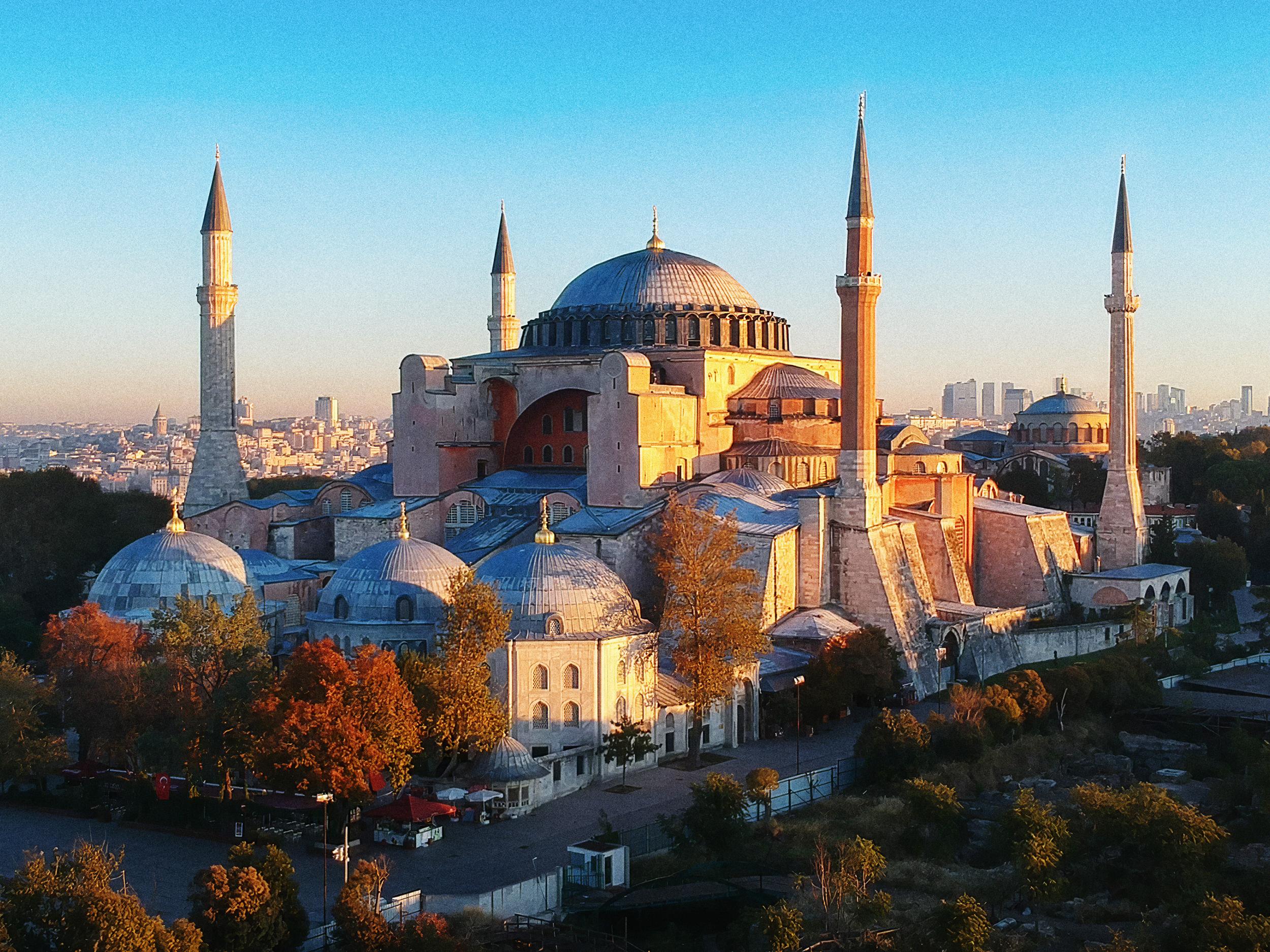
Written in October, 2016 as Process Essay Assignment
Hagia Sophia is a splendid historical place located in Istanbul, Turkey. It amuses people by not only its own remarkable architecture but also its phenomenal history. As one of the popular destinations and the second most visited place in Turkey, visitors from around the world are curious about the development of Hagia Sophia throughout time. Despite the fact that it was built as a church in the 6th century and converted into a mosque in the 15th century, today it becomes a museum. There is a certain process in how Hagia Sophia finally transformed into a place that promotes interfaith tolerance.
To begin with, the history of Hagia Sophia started as a cathedral for the Greek Orthodox Christian community in the capital city of the Byzantine Empire, Constantinople, and under the reign of Emperor Justinian I, the construction started at 532 up to 537. (Hagia Sophia, n.d.) The name, Hagia Sophia, means the Church of Holy Wisdom, but this cathedral is also known as Sancta Sophia in Latin and Ayasofya in Turkish. Hagia Sophia was constructed by Anthemius of Tralles and Isidorus of Miletus as a basilica, and it was designed to be one of the greatest buildings at that time. Several earthquakes happened while it still functioned as a church, thus the place was reconstructed a couple of times. In short, as a church with unique name and shape, Hagia Sophia symbolized the prosperity of Byzantine Empire in Constantinople as the eastern region for Christians. (A Monumental Struggle to Preserve Hagia Sophia, 2008).
When Sultan Mehmed II, the leader of Ottoman Turks Empire, conquered Constantinople in 1453, Hagia Sophia was converted into a mosque, and the invaders changed the name of the fallen city, Constantinople, to Istanbul. Additional Islamic attributes like four minarets, a mihrab, and a minbar were built for the new imperial mosque. Under the order of Sultan Mehmed II too, the Turks did not destroy mosaics, paintings, or other figurative Christianity ornaments inside the Hagia Sophia. Instead, the new rulers in the city let them remained in their place, also they respected and treated them with fairness. Indeed, it makes the view inside Hagia Sophia looks impressive since it was mixing two different religions in one place.
The most recent transformation of Hagia Sophia occurred when the first president of the Republic of Turkey, Mustafa Kemal Atatürk, changed the function of Hagia Sophia from a mosque to a museum in 1935. As the part of his revolutionary movement to westernize Turkey, Atatürk secularized Hagia Sophia and making it as an icon for Atatürk’s cultural legacy also as the Turkish nationalism. (A Monumental Struggle to Preserve Hagia Sophia, 2008). As a museum, Hagia Sophia has succeeded to make people from academicians, historians, and visitors from other parts of the world visit this place.
In brief, Hagia Sophia is a proof that even such a long time ago there is a possibility between different religions or even different culture to live together. Today, Hagia Sophia becomes part of UNESCO World Heritage under the Historic Areas of Istanbul. In recent years, many people argue demanding that Hagia Sophia should be restored to its function, either as a church or a mosque. However, it would be problematic since people, who are concern with this place, have to choose an option. So that, it’s the best decision to make this place stays as a museum. (561 words, including citation)
Bibliography:
Top 10: Turkey’s most visited museums. (2014, November 10). Hurriyet Daily News. Retrieved from
Bordewich, F. M.(2008, December). A
Monumental Struggle to Preserve Hagia Sophia. Smithsonian.
Retrieved from
http://www.smithsonianmag.com/travel/a-monumental-struggle-to-preserve-hagia-sophia-92038218/?all
Hagia Sophia. (n.d.). In Encyclopædia Britannica online. Retrieved from https://www.britannica.com/topic/Hagia-Sophia

